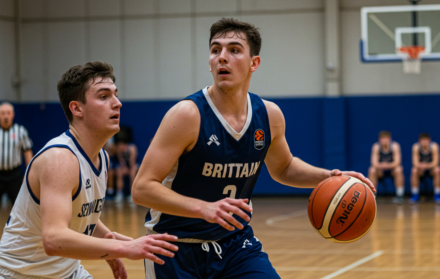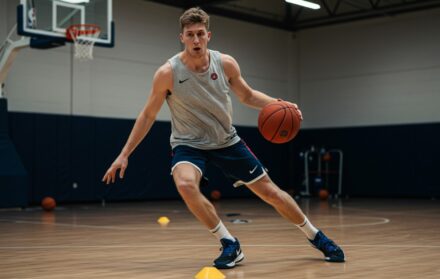
Which Basketball Skills Matter Most?
Every basketball fan remembers the highlight plays — the slam dunks, the buzzer-beaters, the game-winning blocks. But the truth is that these moments don’t happen without a foundation of fundamental skills. Basketball is unique among team sports because it demands a blend of individual mastery and coordinated teamwork. A player who lacks basic skills will struggle to keep up, no matter how tall, strong, or athletic they are.
For beginners, the number of skills to learn can feel overwhelming. Should you start with shooting, since points win games? Or should you focus on dribbling so you can actually move with the ball? What about defence, rebounding, or passing? The good news is that the game can be broken down into a set of core skills that every player, regardless of position, must master. Once those are strong, supporting abilities like stamina, decision-making, and confidence become easier to develop.
This guide will walk you through the basketball skills that matter most, explaining why they’re important, how to learn them, and what drills to use to improve. Whether you’re just stepping onto the court for the first time or looking to tighten up your fundamentals, mastering these skills will give you a foundation to grow as a player.
Dribbling and Ball Handling
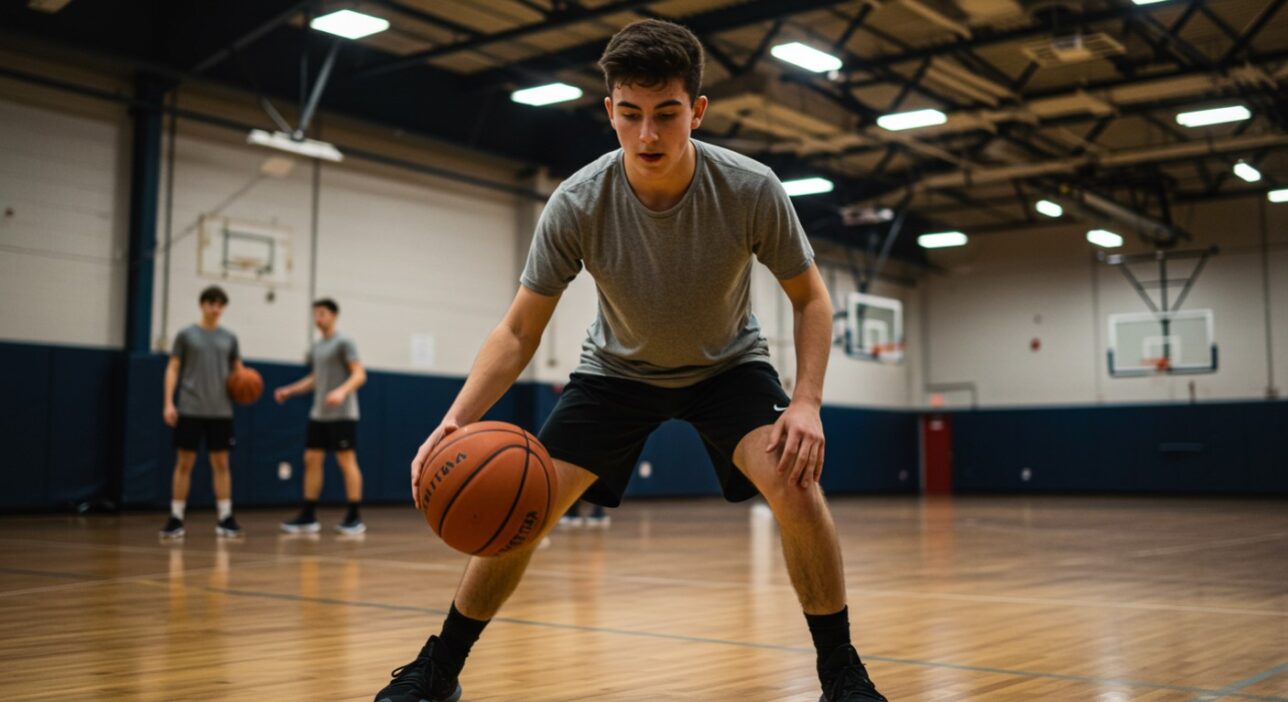
Dribbling is the very first skill every basketball player must learn. Without it, you can’t move legally with the ball, you can’t escape defenders, and you can’t create scoring chances. A shaky dribble makes you an easy target, while confident ball handling gives you freedom on the court. For beginners, this is the gateway skill that unlocks everything else.
The Basics of a Good Dribble
At its simplest, dribbling is about rhythm and control. The ball should be bounced with your fingertips, not slapped with your palm. Keeping your knees bent and your body low allows you to move quickly and protect the ball. Beginners often stare at the ball, but lifting your eyes to scan the court is what turns dribbling from survival into opportunity.
Building Confidence with Both Hands
One of the first hurdles is learning to dribble equally with your left and right hand. New players almost always rely on their dominant hand, but this makes them predictable. A defender will simply force you the other way. Start with simple drills: 50 controlled bounces with the right hand, then 50 with the left. Walk forward and backward while switching hands. Over time, you’ll stop thinking about which hand is in use — it will feel natural.
Adding Variety: Crossovers and Beyond
Once you’re comfortable, add changes of direction. The crossover dribble — shifting the ball quickly from one hand to the other — is the first move every beginner should learn. Later, you can experiment with behind-the-back dribbles, spin moves, and hesitation dribbles. Each one has its moment: a spin move to escape a trap, a hesitation to freeze a defender, or a quick crossover to drive into space.
Drills That Work
-
Cone zig-zags: weave through cones, switching hands at each change of direction.
-
Two-ball dribbling: bounce one high, one low at the same time to build coordination.
-
Wall vision drill: dribble while a partner flashes numbers or colours on the wall, forcing you to keep your eyes up.
Mistakes Beginners Should Avoid
Most mistakes come from rushing. Beginners bounce the ball too high, slap it too hard, or pick it up without purpose. Another bad habit is over-dribbling — pounding the ball repeatedly without advancing. In real games, every bounce should mean something: to move, to create space, or to set up a pass.
Why Strong Ball Handling Matters
Great dribbling is not about flash — it’s about control. Think of Kyrie Irving or Stephen Curry, who use their handles not just to entertain but to dictate entire games. For beginners, mastering dribbling brings confidence. Suddenly, you’re not afraid of pressure. You can protect the ball, see the floor, and make things happen. That shift — from surviving to controlling — is why ball handling matters more than almost anything else at the start.
Passing and Court Vision
Passing is what makes basketball a true team sport. While highlight reels often focus on spectacular dunks or long-range shots, coaches and experienced players know that accurate, well-timed passing is the engine that drives every offence. A team that moves the ball effectively can outsmart even the most athletic defenders. For beginners, learning to pass properly is just as important as learning to shoot.
Why Passing Matters
Good passing keeps defenders guessing, creates open looks for teammates, and speeds up the game. Poor passing, on the other hand, leads to turnovers and wasted possessions. Even a player who isn’t a natural scorer can become invaluable if they consistently deliver the ball where it needs to go.
Types of Passes
-
Chest pass: The most common pass, delivered directly from your chest to a teammate’s chest with both hands.
-
Bounce pass: Thrown so the ball bounces once before reaching the teammate. This is ideal when a defender has their arms up.
-
Overhead pass: Delivered from above your head, useful for long distances or inbounds plays.
-
Baseball pass: A one-handed throw for covering long distances quickly, often used in fast breaks.
-
No-look pass: An advanced pass designed to trick defenders, best attempted once fundamentals are solid.
How to Pass Effectively
Passing isn’t just about mechanics — it’s about timing and decision-making. Step toward your target for power, snap your wrists for spin, and always aim for the chest or target hand. Equally important is knowing when not to pass. Beginners should practise scanning the floor, waiting for the right window rather than rushing.
Court Vision
Court vision separates good passers from great ones. It means seeing not just the obvious pass, but anticipating where teammates and defenders will move next. Develop vision by keeping your head up while dribbling, practising awareness drills, and studying professional playmakers.
Drills to Improve Passing
-
Wall passing: Practise chest and bounce passes against a wall.
-
Partner passing: Exchange passes while moving at game speed.
-
Keep-away games: Small-sided drills to emphasise quick, accurate ball movement.
-
Three-man weave: A full-court drill combining movement, timing, and teamwork.
Common Mistakes
Beginners often throw passes too softly or too hard, making them either easy to intercept or difficult to catch. Telegraphing — staring at the target before releasing the ball — is another common error defenders exploit.
Why Passing Matters Most
Passing makes everyone better. It turns a group of players into a team. Legends like Magic Johnson and Steve Nash built their careers on vision and timing rather than raw scoring power. For beginners, learning to pass well is not optional — it’s essential.
Defence and Footwork

It’s often said that “offence wins games, but defence wins championships.” While scoring gets the spotlight, defence is where beginners can immediately make an impact. Even if you’re not yet confident shooting or dribbling, you can help your team by learning how to defend properly. Defence is about effort, positioning, and anticipation — qualities any beginner can build with practice.
The Defensive Stance: Your Starting Point
Everything begins with stance. Keep your knees bent, back straight, and feet shoulder-width apart. Weight should rest on the balls of your feet, ready to move in any direction. Extend your arms wide to contest passes and shots. This stance might feel tiring at first, but it creates balance and quickness, letting you react instantly to your opponent.
On-Ball Defence: Staying in Front
Guarding the player with the ball is one of the toughest tasks. Your job is to stay between them and the basket, forcing them into low-percentage shots. Instead of reaching for the ball (which often leads to fouls), focus on sliding laterally with quick, short steps. Never cross your feet, or you’ll lose balance. Watch their midsection rather than their hands or head — it’s harder for them to fake with their core than with a flashy dribble.
Off-Ball Defence: Awareness Matters
Defence doesn’t stop when your opponent passes the ball. Off-ball defenders must anticipate plays, cover passing lanes, and help teammates when an attacker drives. This requires constant awareness — glance between your player and the ball, staying in a position to contest a pass while being ready to rotate if a teammate gets beaten. Good off-ball defenders are often the glue of a team, disrupting plays before they develop.
Drills That Build Defensive Skills
-
Defensive slides: Shuffle side to side across the court, staying low in stance.
-
Close-out drill: Sprint from under the basket to the three-point line, then settle into defensive stance to contest a shot.
-
Mirror drill: Partner faces you and moves randomly left or right; your job is to mirror them without crossing your feet.
Common Mistakes Beginners Make
Reaching in is the most frequent error — beginners lunge for the ball and commit fouls instead of maintaining position. Another is standing upright; once you rise from your stance, you lose speed and balance. Some players also “ball-watch,” forgetting about their opponent off the ball and leaving them wide open.
Why Defence Matters Most
Strong defence can change games. A blocked shot or a stolen ball not only denies points but often leads to fast-break opportunities for your team. Defence doesn’t depend on height, strength, or natural talent — it’s about hustle, awareness, and technique. Even beginners can excel here, earning more minutes on the court by being reliable stoppers. Coaches notice effort, and defence is where effort shines most.
Rebounding and Positioning
Rebounding is often called the “hidden skill” of basketball. Scoring and flashy moves catch the eye, but it’s rebounds that quietly win games. Every rebound gives your team another chance to score or denies the opponent the same opportunity. For beginners, learning to rebound effectively is one of the fastest ways to contribute, even if you’re not yet confident with the ball in your hands.
Why Rebounding Matters
Basketball is a game of possessions. Teams usually score on about 40–50% of their attempts. That means rebounds decide who controls the rest. An offensive rebound can turn a missed shot into an easy put-back. A defensive rebound shuts down the other team and allows you to push the ball forward. Players who rebound consistently become invaluable, no matter their position.
The Art of Boxing Out
Rebounding isn’t just about height — it’s about positioning. The key technique is boxing out: using your body to block your opponent’s path to the ball. As soon as a shot goes up, find your man, turn, and put your back against their chest while spreading your arms. This creates space for you to grab the ball when it comes down. Beginners often chase the ball with their eyes, forgetting to secure position first. Coaches will always reward players who box out.
Reading the Ball’s Trajectory
Anticipation separates average rebounders from great ones. Watch the shooter’s release and angle of the shot. Long shots often create long rebounds, bouncing out to the free-throw line, while close-range misses tend to drop near the basket. With practice, you’ll start to sense where the ball will land and move there before others react.
Drills That Build Rebounding Skills
-
Rebound-and-outlet drill: After securing the rebound, immediately pivot and pass to a teammate running down the court.
-
Triangle drill: Three players surround the basket; coach shoots. Whoever doesn’t rebound must box out and fight for the ball.
-
Solo tosses: Throw the ball against the backboard yourself, box out an imaginary opponent, and secure the rebound.
Common Beginner Mistakes
New players often try to grab rebounds with one hand instead of securing it with two. Others fail to box out, allowing taller opponents easy access. Some celebrate too early, assuming a shot will fall, only to watch it bounce back into play. Rebounding demands focus until the whistle.
Why Rebounding Matters Most
Great rebounders give their team extra possessions and deny opponents second chances. Think of legends like Dennis Rodman or modern players like Rudy Gobert — their reputations were built less on scoring and more on controlling the glass. For beginners, rebounding is an equaliser: you don’t need advanced ball-handling or shooting to dominate this area. With hustle, positioning, and awareness, you can impact every game from day one.
Basketball IQ and Decision-Making
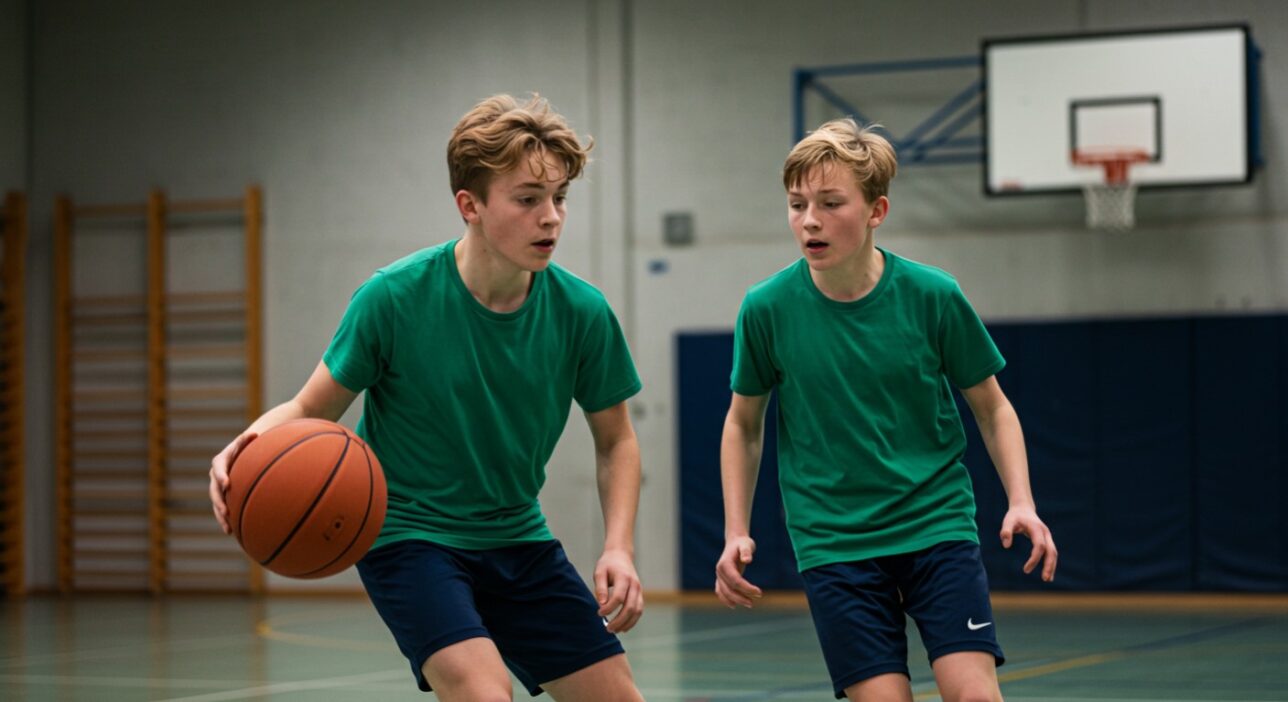
Basketball isn’t just physical — it’s mental. A player with high basketball IQ knows when to shoot, when to pass, and when to slow the game down. Even beginners can develop this awareness by learning to read the flow of play.
What Basketball IQ Means
Basketball IQ refers to the ability to make smart decisions in real time. It’s not about memorising plays, but understanding how the game unfolds. Players with good IQ anticipate where the ball will go, how defenders will react, and what option gives their team the best chance to score.
Developing Decision-Making Skills
-
Watch the game actively: Don’t just follow the scorer — study how possessions start, build, and finish.
-
Play different roles: Switching between guard and forward in casual games helps you understand responsibilities from multiple perspectives.
-
Ask “what if” questions: After a play, reflect on what might have happened if you had passed instead of shot, or defended differently.
Examples from the Pros
Chris Paul is famous for his basketball IQ. He controls tempo, reads defences, and knows exactly when to involve teammates. For beginners, observing players like Paul or Nikola Jokić — who seem to always be two steps ahead — is a masterclass in decision-making.
Communication and Teamwork
No basketball player succeeds alone. Communication turns five individuals into one unit. From calling out defensive switches to signalling plays, constant talk is what keeps teams organised.
Why Communication Matters
On defence, a simple “screen left!” alert can prevent an opponent from getting an open shot. On offence, calling for the ball or pointing to space creates clarity. Silence breeds confusion; chatter creates trust.
Verbal and Non-Verbal Cues
-
Verbal: Shouting “I’ve got ball!” or “switch!” to guide teammates.
-
Non-verbal: Eye contact, hand signals, or a subtle head nod before a cut.
Teamwork Beyond Talking
Teamwork means making sacrifices: setting screens, boxing out, or passing up a tough shot for a better one. Beginners sometimes focus on individual stats, but coaches value players who make the group stronger.
Drills to Build Teamwork
-
Shell drill: Four defenders rotate and talk as the ball moves around the perimeter.
-
Screen-and-roll practice: Teammates communicate switches until it becomes instinctive.
Great teams — from grassroots to the NBA — all share one thing in common: they talk.
Stamina and Conditioning
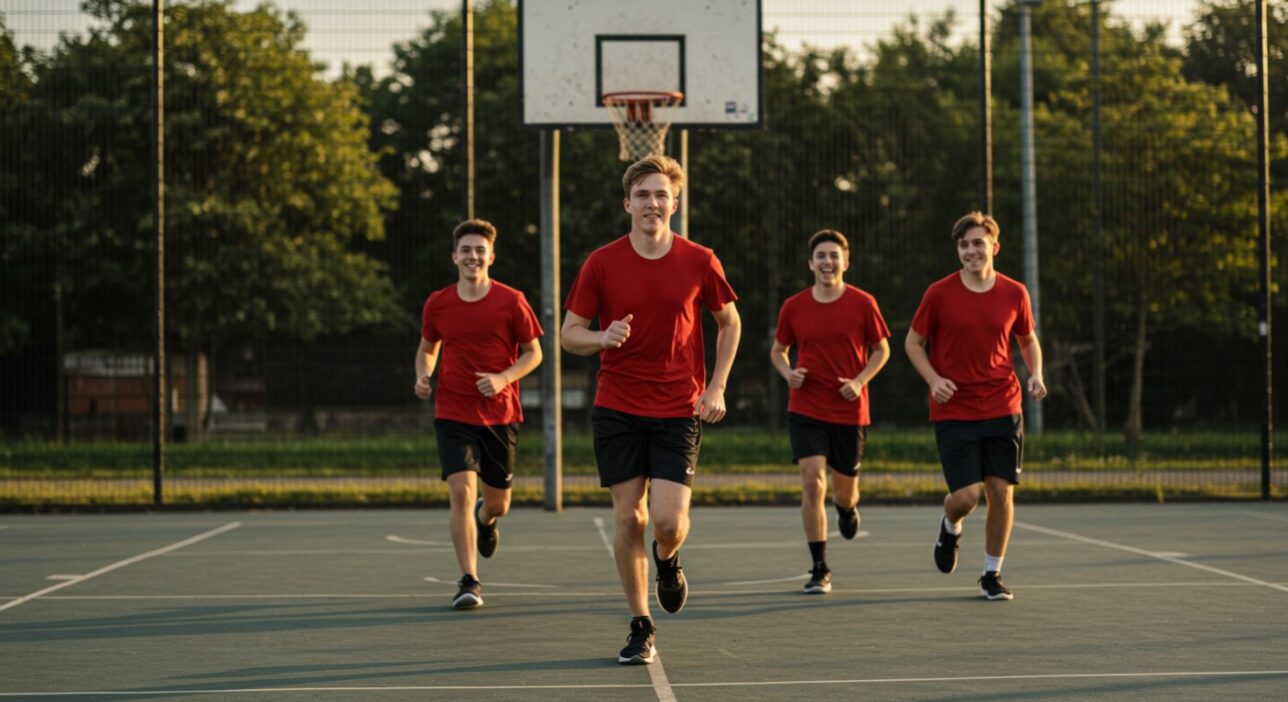
Basketball is relentless. It demands short bursts of speed, explosive jumps, and constant defensive effort. Without stamina, even skilled players fade quickly. Conditioning isn’t about running endless miles — it’s about training your body to handle the game’s unique rhythm.
The Demands of the Game
A typical possession lasts about 24 seconds. Players sprint, stop, change direction, jump, and then reset — over and over. This requires cardiovascular endurance, muscular strength, and agility.
Conditioning Exercises
-
Interval sprints: Sprint for 30 seconds, jog for 60, repeat 10 times. Mimics game pace.
-
Plyometrics: Box jumps, squat jumps, and burpees build explosive power for rebounds and blocks.
-
Agility ladders: Improve foot speed and coordination.
-
Core training: Planks and twists stabilise movement.
Why Beginners Should Care
Good conditioning doesn’t just prevent fatigue; it prevents injuries. A tired player makes mistakes, gets sloppy on defence, and risks pulling muscles. Beginners who build stamina quickly find themselves able to compete longer and focus better.
Examples from the Pros
LeBron James’ longevity is often attributed to conditioning. His ability to play at a high level well into his late 30s proves that fitness is as vital as skill.
Mental Toughness and Confidence
Basketball is a game of runs, pressure, and mistakes. Even the best players miss shots. Mental toughness ensures you stay focused and resilient.
Handling Mistakes
Every beginner will travel, miss open layups, or commit fouls. The key is bouncing back quickly. Dwelling on errors only hurts the next play. Adopt the mindset of “next possession” — learn, but move forward.
Building Confidence
Confidence comes from repetition. The more shots you take in practice, the easier they feel in games. Free throws are a perfect example: players who shoot hundreds in practice step to the line with calm assurance.
Routines That Help
-
Pre-shot routines: Dribble three times before every free throw. Consistency breeds comfort.
-
Visualisation: Picture yourself succeeding before stepping on the court.
-
Positive self-talk: Replace “don’t miss” with “this one’s mine.”
Lessons from the Pros
Michael Jordan famously said he missed more than 9,000 shots in his career, but each miss taught him resilience. Beginners should take inspiration: success comes not from avoiding failure, but from responding to it.
Which Skills Matter Most by Position
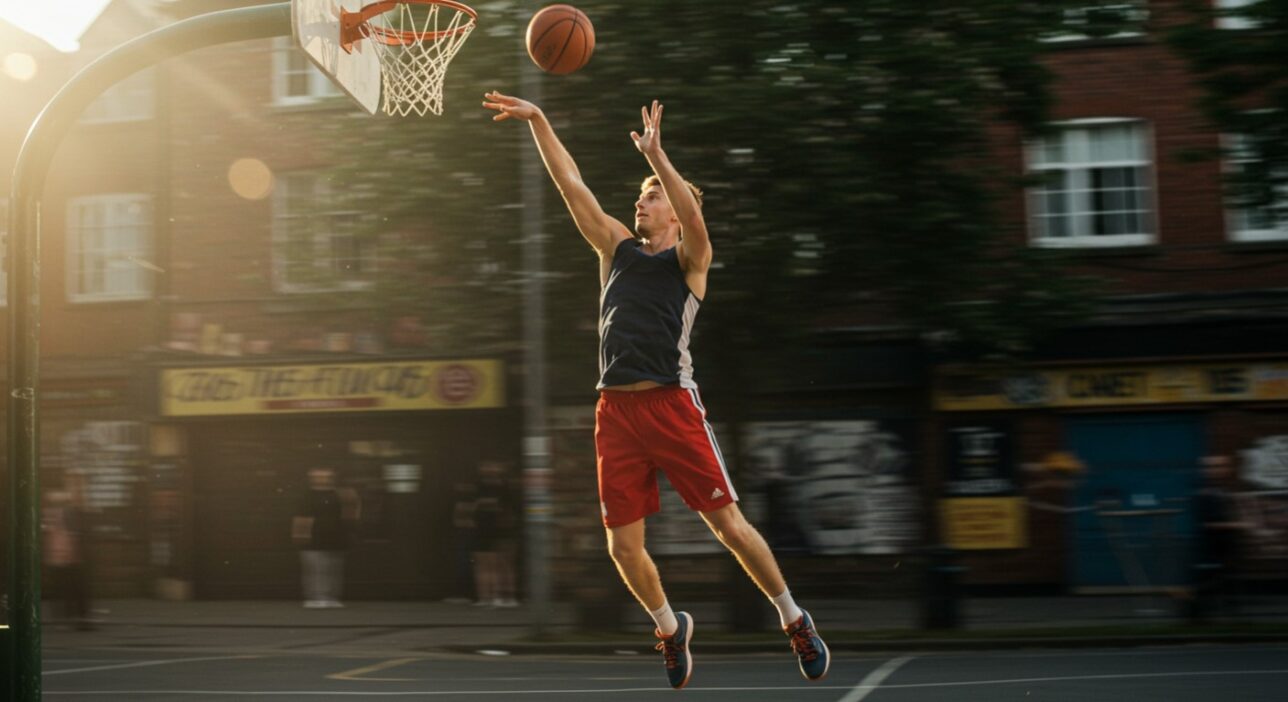
Basketball skills don’t matter equally for every role. While all players need the core five, certain positions emphasise different strengths.
Guards (Point Guards & Shooting Guards)
-
Priority: dribbling, passing, perimeter shooting.
-
Guards are floor generals, setting the pace and creating plays. Strong ball-handling and court vision are non-negotiable.
Forwards (Small Forward & Power Forward)
-
Priority: rebounding, versatile defence, mid-range scoring.
-
Forwards must do a bit of everything: defend inside and outside, crash boards, and attack mismatches.
Centres
-
Priority: rebounding, shot-blocking, close-range scoring.
-
Centres dominate the paint. Even without strong dribbling, they can control games through defence and second-chance points.
Beginners
-
Focus first on dribbling, layups, passing, and defensive stance. These skills let you contribute in any casual game before specialising.
Training Priorities for Beginners
The natural question is: where do you start? With so many skills to learn, beginners need a clear order of priorities.
-
Ball handling: Without dribbling, you can’t move or protect the ball.
-
Layups and close shots: The easiest way to score early.
-
Passing under pressure: Keeps you useful even when you can’t score.
-
Defensive stance and positioning: Coaches love players who hustle on defence.
-
Free throws: Free points that often decide games.
By focusing on these five steps, beginners build a foundation that makes every other skill easier to layer on.
Drills That Improve the Essential Skills
Drills translate theory into muscle memory. Here are a few that touch every major skill:
-
Cone zig-zags: Develops dribbling control and confidence.
-
Three-man weave: Sharpens passing, timing, and teamwork.
-
Five-spot shooting: Builds consistency across multiple positions on the floor.
-
Box-out battles: Two players fight for rebounds after a coach’s shot.
-
Close-out drill: Sprint from the key to the perimeter to contest shots.
Fun games like HORSE and knockout also build shooting skills while keeping practice engaging.
Conclusion: Mastering the Basketball Skills That Matter Most
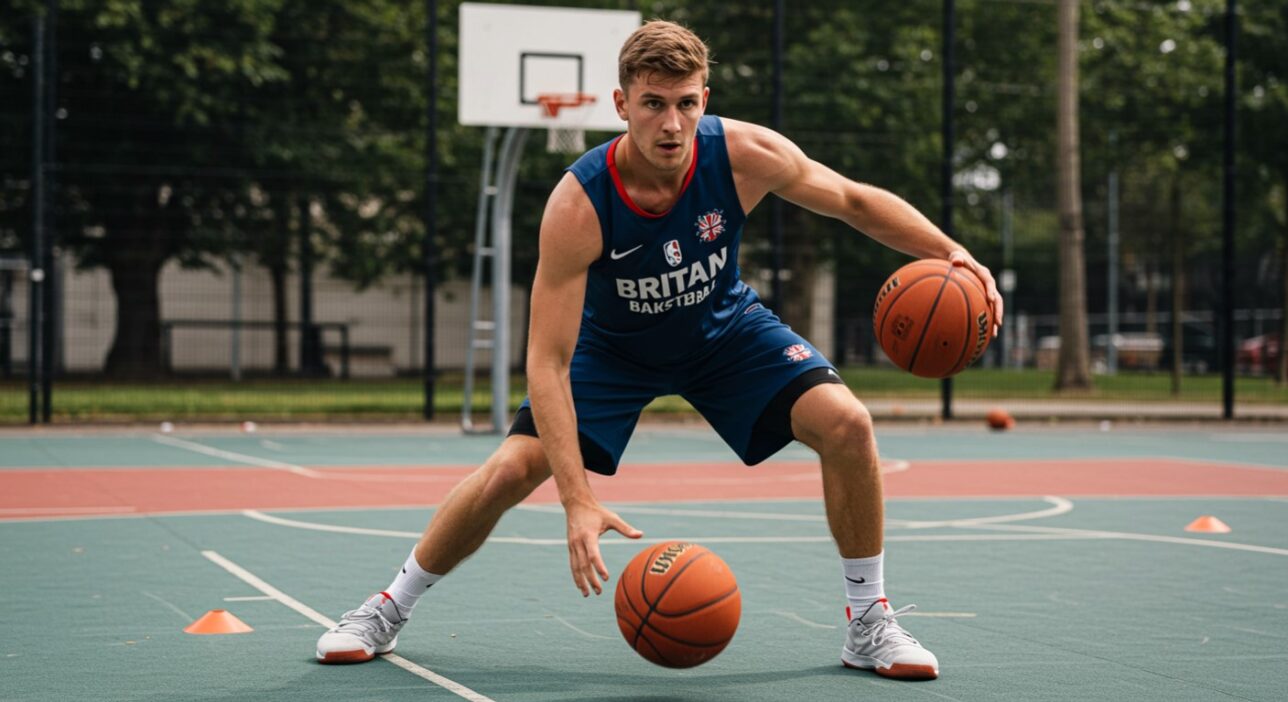
Basketball rewards players who invest in their fundamentals. The five core skills — dribbling, passing, shooting, defence, and rebounding — form the backbone of success at every level. Supporting abilities like basketball IQ, communication, stamina, and mental toughness elevate good players into great ones.
For beginners, the path is clear: focus on the basics, practise consistently, and don’t be discouraged by mistakes. Even professionals spend hours on layups, free throws, and footwork every day. By building this foundation, you’ll not only become a stronger player, but you’ll also enjoy the game more.
The skills that matter most are the ones that make you reliable. Master those, and you’ll always have a place on the court.
